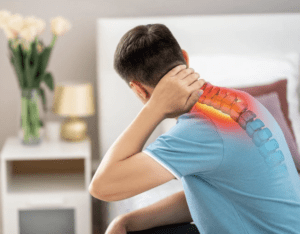

How to Live a Good Life Without Pain : A Comprehensive Guide
Living a life free from pain is a fundamental aspect of overall well-being and quality of life. Whether you’re dealing with chronic conditions, recovering from injuries, or simply aiming to enhance your daily comfort, there are numerous strategies you can adopt to minimize pain and improve your quality of life. Here’s a comprehensive guide to living a fulfilling life with minimal pain.
1. Prioritize Physical Health
Why It Matters: Physical health is crucial for preventing and managing pain. Maintaining a healthy body supports overall well-being and reduces the risk of various pain-related issues.
How to Achieve It:
• Exercise Regularly: Engage in regular physical activity to strengthen muscles, improve flexibility, and support joint health. Choose low-impact exercises like walking, swimming, or cycling if you’re dealing with joint pain.
• Maintain a Healthy Weight: Excess weight puts additional strain on the body’s joints and muscles. Adopting a balanced diet and regular exercise helps manage weight and reduce pain.
• Get Quality Sleep: Prioritize good sleep hygiene by establishing a regular sleep schedule, creating a restful environment, and using a supportive mattress. Quality sleep aids in recovery and reduces pain sensitivity.
2. Practice Proper Body Mechanics
Why It Matters: Proper body mechanics help prevent strain and injury, reducing the likelihood of pain caused by improper posture or movement.
How to Achieve It:
• Use Ergonomic Furniture: Invest in ergonomic chairs, desks, and accessories to support good posture and reduce strain while working or sitting for long periods.
• Lift Correctly: Use proper lifting techniques by bending your knees and keeping your back straight. Avoid twisting your body while lifting.
• Maintain Good Posture: Pay attention to your posture when sitting, standing, and moving. Keep your shoulders back, spine aligned, and avoid slouching.
3. Incorporate Stress Management Techniques
Why It Matters: Stress can contribute to muscle tension and exacerbate pain. Managing stress effectively is essential for reducing pain and improving overall well-being.
How to Achieve It:
• Practice Relaxation Techniques: Engage in relaxation methods such as deep breathing, meditation, or progressive muscle relaxation to reduce stress and tension.
• Stay Connected: Maintain social connections and engage in activities that bring joy and fulfillment. Social support and positive experiences can help manage stress and pain.
• Seek Professional Help: Consider working with a therapist or counselor if stress, anxiety, or depression are contributing to your pain. Professional support can provide coping strategies and emotional relief.
4. Focus on Nutrition and Hydration
Why It Matters: Proper nutrition and hydration play a significant role in maintaining overall health and managing pain. Certain nutrients and hydration levels can affect inflammation and muscle function.
How to Achieve It:
• Eat a Balanced Diet: Incorporate a variety of fruits, vegetables, lean proteins, and whole grains into your diet. Anti-inflammatory foods such as omega-3 fatty acids (found in fish and flaxseeds) can help reduce pain and inflammation.
• Stay Hydrated: Drink plenty of water throughout the day to support joint lubrication and overall bodily functions. Proper hydration helps maintain muscle function and reduce the risk of cramps and stiffness.
5. Explore Pain Management Techniques
Why It Matters: Effective pain management techniques can help reduce discomfort and improve daily functioning. A variety of approaches can be tailored to your specific needs.
How to Achieve It:
• Physical Therapy: Work with a physical therapist to develop a personalized exercise program that addresses pain and improves mobility.
• Complementary Therapies: Explore therapies such as acupuncture, massage, or chiropractic care to complement conventional treatments and alleviate pain.
• Medications: Use over-the-counter or prescription medications as advised by a healthcare provider to manage pain. Always follow dosing instructions and consult with a healthcare professional before starting any new medication.
6. Engage in Mental and Emotional Well-being
Why It Matters: Mental and emotional well-being significantly impacts how you perceive and manage pain. A positive mindset and emotional health contribute to a higher quality of life.
How to Achieve It:
• Set Realistic Goals: Set achievable goals for yourself and celebrate small successes. Positive reinforcement helps maintain motivation and improves overall outlook.
• Practice Mindfulness: Mindfulness practices, such as meditation and mindfulness-based stress reduction (MBSR), can help manage pain by increasing awareness and reducing stress.
• Pursue Hobbies: Engage in activities and hobbies that bring joy and fulfillment. Enjoyable activities can distract from pain and improve emotional well-being.
7. Seek Support and Stay Informed
Why It Matters: Support from others and staying informed about pain management can empower you to take control of your health and well-being.
How to Achieve It:
• Join Support Groups: Participate in support groups for individuals with similar pain conditions. Sharing experiences and advice can provide emotional support and practical tips.
• Stay Educated: Keep up with the latest information and research on pain management and treatments. Knowledge empowers you to make informed decisions about your health.
Conclusion
Living a good life without pain involves a multifaceted approach that includes prioritizing physical health, practicing proper body mechanics, managing stress, focusing on nutrition, exploring pain management techniques, engaging in mental well-being, and seeking support. By adopting these strategies, you can enhance your quality of life and minimize pain. Remember, it’s important to work with healthcare professionals to tailor these approaches to your individual needs and ensure a comprehensive and effective plan for managing and alleviating pain.








